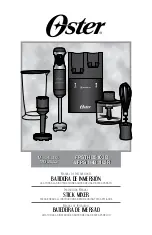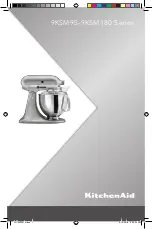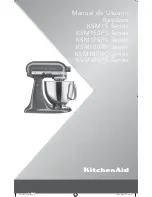
5
Dual monitor systems permit setting up two zones of coverage. Certain channels may
be isolated through one system or at least mixed louder through it. As an example, the
vocalists might want to hear themselves predominantly through their monitors. The other
system might carry a more generalized mix for the rest of the band’s monitors. Remember
that the channel Mon 1 and 2 send controls are affected by the channel EQ, but NOT the
fader. When feedback sets in, it’s often the monitors, not the mains, although it comes
through both systems so it’s hard to tell. When it happens, turn down the suspect chan-
nel’s MON sends. You’ll probably kill the feedback and that channel’s level through the
main P.A. can remain unchanged. Now you can adjust the Mon 1 or Mon 2 EQ then turn
that channel’s Mon send back up (carefully, you may still have some EQ-ing to do).
11. AUX Send
The channel Aux send is post-EQ and post-fader. Internal routing is
1. to the Aux Send master and Clip LED, and
2. to the Aux Send jack.
Since the Aux sends are post-fader, any changes to the channel fader levels will result
in changes to the Aux send levels. Therefore the Aux sends are useful for adding exter-
nal effects (there are also stereo Aux Returns), and for mono recording purposes such as
speeches, a demo record rhythm track, etc.; which do not require effects or graphic -EQ
(this is a pre-effects, pre-EQ dry signal).
12. Efx 1 and 2 Sends
Like the Aux send, these are post-fader and post-EQ. The EFX1 send is internally routed…
1. to the Efx 1 Send master fader,
2. to the internal digital effects 1 system,
3. to the Efx 1 Return masters.
The Efx 2 send is internally routed…
1. to the Efx 2 Send master fader,
2. to the internal digital effects to system, and (simultaneously) to the Efx 2 Send jack,
3. to the Efx 2 Return masters.
The PowerMAX effects processors operate independently as two discreet stereo
effects systems with sixteen presets and a parameter control each. You can, for
example, have reverb on the Efx 1 system and a special effect on Efx 2. These would
be mixed together on the main and monitor signals by the Efx Return to L&R and
Mon 1 and 2 masters.
To get started, figure out which channels you want effects on (e.g. vocals, lead guitar,
horns and keyboards - most likely not on the drums or the bass). During a sound check,
turn up the Efx 1 send controls on those channels about halfway at first and push up
the channel level faders also about halfway. Now dial in the desired effect using the Efx
1 Select and Parameter controls – the menu of presets with the parameter adjusted by
the parameter pot appears below the dials. Next, turn up the Efx 1 L&R (main system)
Return Levels master about halfway. Now push up the L&R main master faders to a mod-
erate listening level, as well as the Efx 1 send master. Finally, re-adjust the channel Efx
1 send levels to add or subtract the effect’s intensity in the main mix. Alternatively, you
may preview the effects through headphones using the Solo buttons covered later on. To
preview the effects on the monitor mixes, plug in headphones (jack located at front of
mixer) depress the Mon 1 and/or Mon 2 Solo buttons, set the Solo Mode to PFL and turn
up the Headphone master.
The channel Efx 1 send controls are exclusively for the internal effects system.
The channel Efx 2 send controls allow you to add external or internal effects. With no
external effects units connected between the Efx 2 Send jack and L/R Return jacks, the
internal Efx 2 system will be available to the mains and monitors. Simply set the Efx 2
Au
x
EF
X
1
EF
X
2
Mon
1
Mon
2
Bal
Act
Clip
15/16
Low
80Hz
250Hz
2.5KHz
High
Gain
12KHz
Hi Mid
Lo Mid
Solo
Mute
15/16
-15
+15
0
dB
-15
+15
0
dB
-15
+15
0
dB
-15
+15
0
dB
0
5
2
8
7
6
4
3
9
1
10
0
5
2
8
7
6
4
3
9
1
10
0
5
2
8
7
6
4
3
9
1
10
0
10
0
10
dB
-36
+40
line
+20
-20
0
-6
+10
24
12
6
0 0
3
24
dB
12
6
6
-
+
0
3
0 0
3
Содержание POWER MAX YS1011
Страница 34: ...32 ...








































